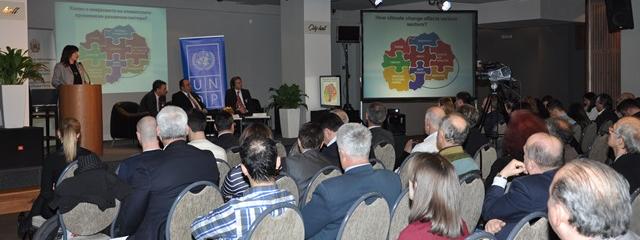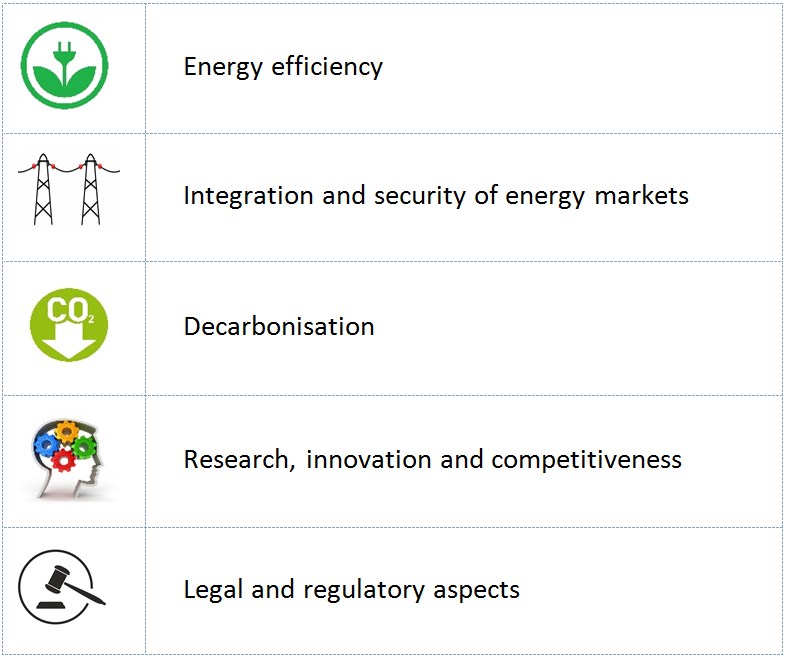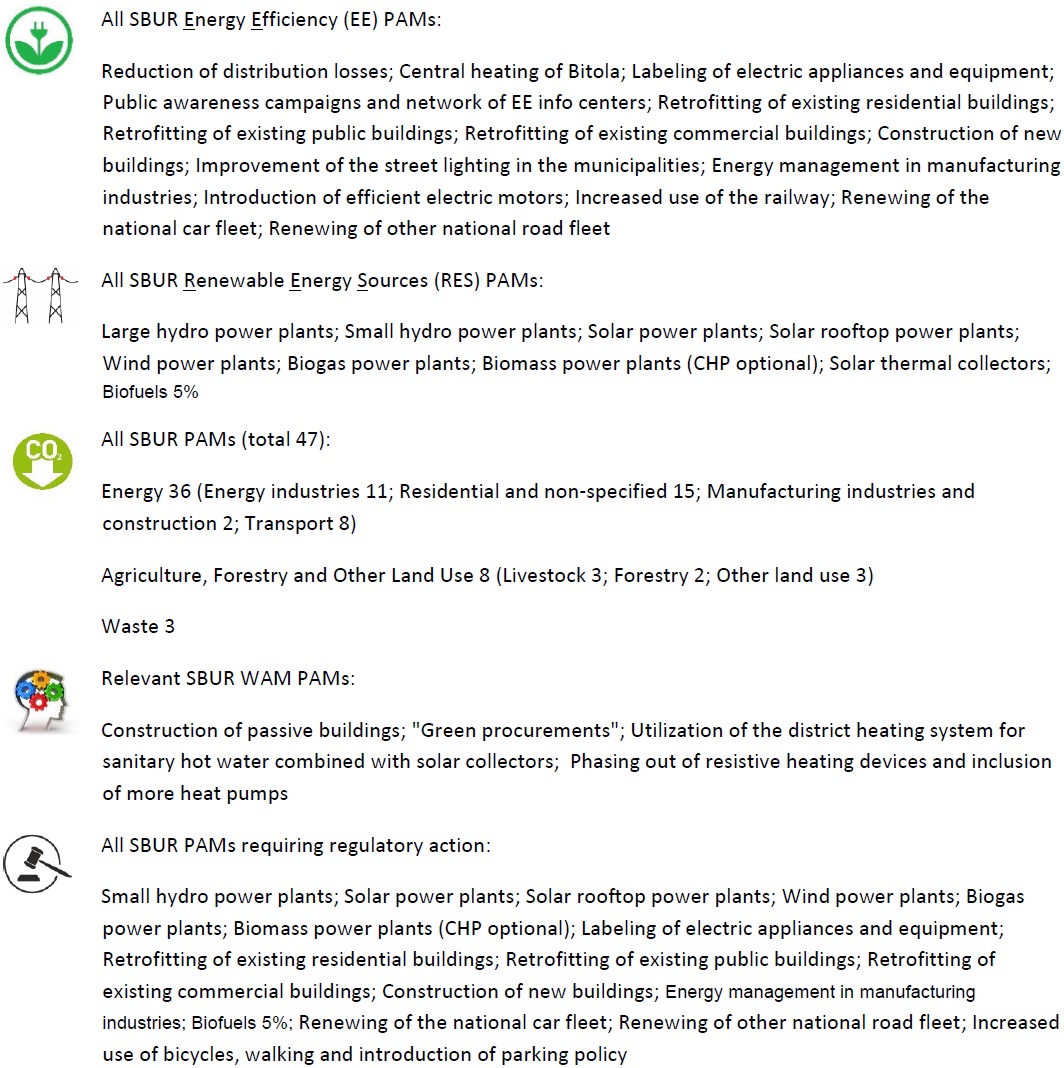Macedonian Second Biennial Update Report as an entry point to the national integrated energy and climate planning
The Macedonian SBUR is a crucial tool for the adoption and alignment with Energy Union Strategy
- {{"article.by"|translate}} NATASA MARKOVSKA, RCESD-MANU
- {{"article.posted"|translate}} 01-06-2020
Macedonian Second Biennial Update Report as an entry point to the national integrated energy and climate planning
The Macedonian SBUR is a crucial tool for the adoption and alignment with Energy Union Strategy
Incorporating a robust analytical work and extensive consultations with the relevant ministries and all other stakeholders, the Macedonian SBUR is a crucial tool for the adoption and alignment with Energy Union Strategy and for more strategic energy and climate planning at national level.
Following the Intended Nationally Determined Contribution under Paris agreement, and as part of the UNFCCC reporting requirements, the country has developed its Second Biennial Update Report (SBUR) which is the most recent document based on the robust analytical work and consultations with the relevant ministries and other relevant stakeholders aimed at:
• Identification and validation of possible mitigation policies and measures in the target sectors in agreement with the sector policies and planning documents, as well as with the European Policy on Climate and Energy.
• Identification and validation of the assumptions used for the modelling of the identified policies and measures in line with the sector policies and planning documents, as well as with the European Policy on Climate and Energy.
• Prioritization of identified policies and measures and providing directions for development of mitigation scenarios with existing and with additional measures.
Meanwhile, the country is in a process of developing, discussing and adopting an Energy strategy, as required by the new Energy Law. The Strategy aims to address the five key dimensions of the Energy Union - Security, solidarity and trust; A fully integrated internal energy market; Energy efficiency; Decarbonizing the economy; Research, innovation and competitiveness, and therefore is being structured upon the following five pillars:

In many aspects, the SBUR can be considered as a strong entry point to the new Energy strategy.
First of all, it is the capacity, both, analytical and institutional, and the participatory process, which have been created, maintained and enhanced over the SBUR, and also NDC, First BUR and the three National Communications of Climate Change timelines and brought the country in the group of sixteen countries (out of the 197) that are reproducing their climate pledges as targets in national laws and policies (Only 16 countries meet their commitment to Paris Agreement, new study finds). Specifically, the SBUR was prepared by a highly qualified team of 17 national experts and 1 international expert (40% woman) using wide participatory approach. 31 institutions (13 Governmental Institutions, 5 International Organizations, 6 NGOs, 5 Academia institutions and 2 private companies), or 124 persons (56% woman) were involved to provide data (12 data providers with the State Statistical Office being the most important one) and to discuss and validate the assumptions and results. The created capacity and participatory practice have been ready for use under the new Energy strategy.
Secondly, the SBUR scenarios defined as WOM (without measures), WEM (with existing measures) and WAM (with additional measures) or Survival, Safeway and Climate runner correspond one to one to the Strategy’s three scenarios - Reference, Moderate Transition and Green. In both cases, the scenario modelling tool is MARKAL. Also, the building principle of the scenarios is the same – reflecting different level of ambition in mitigation action and different dynamics of energy transition, ensuring thus consistency in energy planning.
Thirdly, the SBUR policies and measures (PAMs) have contribution to the pillars of the Energy strategy, as elaborated below:

Macedonian SBUR goes beyond the requirements from the UNFCCC Guidelines for Non-Annex I Countries since, besides economic and environmental evaluation, it addresses social aspect estimating co-benefits from the implementation of mitigation PAMs. Hence, it was assessed that over 6,200 domestic green jobs can be expected in 2035 by implementing EE measures in buildings and low-carbon energy supply PAMs. This good practice can be utilized and further extended within the “Research, innovation and competitiveness” pillar of the Energy strategy since it provides essential input for informed policy design and decision-making for enhancing competitiveness in the energy sector.
Furthermore, worth mentioning is the study STUGRES (Study on the Heating in the City of Skopje) conducted also under SBUR, which certainly has a significant role to play when it comes to inclusion of the municipalities in local energy planning and transition. This is an important contribution to the “Decarbonization” pillar of the Energy strategy.
Representation of the SBUR PAMs in a tabular form, with elements prescribed in UNFCCC Guidelines for BUR preparation, is yet another element which can be broadly implemented in current, and even more, in the forthcoming Energy related planning documents, such as National Energy and Climate Action Plan or Energy Efficiency Action Plan. Indeed, this practice of representation of the PAMs with description, steps taken or envisaged, results achieved and estimated outcomes, estimated emission reductions, timeframe, costs, implementing entity, as well as progress indicator, provides solid base for monitoring, reporting and verification (MRV) of the achievement of each the PAMs, but also of the achievement of national energy and climate targets (RES share, EE improvements, GHG emissions reductions). The later assumes appropriate MRV institutional setting and communication flows at national level are established and operational.
Finally, Macedonian SBUR besides PAMs from Energy sector, analyzes and incorporates in its scenarios PAMs from Transport, Industry, Agriculture, Forestry and Other Land Use (AFOLU) and Waste sectors, which also are important target sectors for climate action. In that way, the SBUR brought Energy and Climate closer together and gained momentum for integrated Energy and Climate planning.
Summing up, the elaborated features of the SBUR confirm its significant role in promoting and harnessing links between Energy and Climate Change. When addressing holistically the five main dimensions of the Energy Union, laying down the pathway to achieve the agreed 2030 targets and gaining a perspective until 2050, it is evident that the current and future national Energy planning can capitalize on the capacities, participatory practice, experience, tools and knowledge base developed and utilized in the SBUR process. Also, as convincingly demonstrated in the case of SBUR, the sustainable partnership science – policy-making is a prerequisite for well informed and wise integrated Energy and Climate planning.
-
Корисни линкови
26-01-2021 -
Справување со климатските промени и загадувањето на воздухот во градот Скопје
29-04-2018 -
Финансирање во климата
28-01-2022 -
Микронаративи
08-06-2022
{{"article.lastestPosts"|translate}}
-
Нови финансирања за унапредување на природата и биолошката разновидност на Зелената агенда за Западен Балкан
11-03-2025 -
Започна проектот за развој на 1-от и 2-от двогодишен извештај за транспарентност и 5-от национален извештај за климатски промени на С.Македонија
04-03-2025 -
Земјоделски форум за климатски промени: Се изнаоѓаат решенија за поголема климатска отпроност на заемјоделието
02-12-2024 -
Заврши COP29, центарален фокус на финасирањето за климата
02-12-2024




 Мод за знаковен јазик
Мод за знаковен јазик Говорен асистент
Говорен асистент Означи линкови
Означи линкови

 Зголеми маус
Зголеми маус